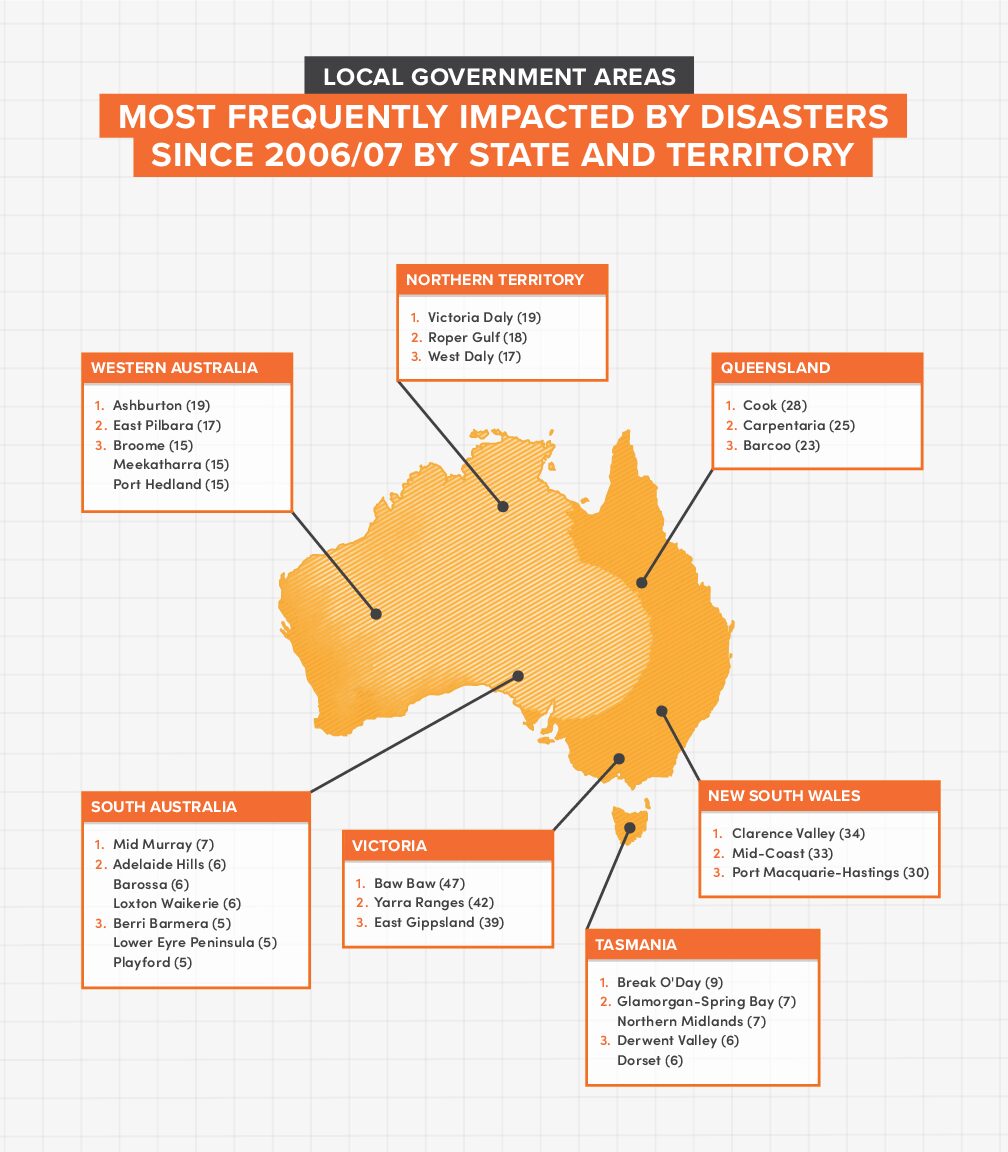
A NEW REPORT REVEALS Victorian communities are among the hardest hit by climate-fuelled disasters in recent years, with four Victorian communities slammed by disaster after disaster.
| Local Government Area | Number of disasters |
| Baw Baw | 47 |
| Yarra Ranges | 42 |
| Wellington | 37 |
| East Gippsland | 39 |
Climate-fuelled extreme weather events are to blame for hundreds of thousands of displacements in Australia. Across the country, Australians have been forced to move almost a quarter of a million times due to extreme weather events. In Rochester, Victoria, 70% of those who lost their homes in the 2022 floods were still homeless seven months later.
The report by Emergency Leaders for Climate Action, ‘Too close to home’, recommends crucial steps the Australian Government needs to take to better protect communities from climate-fuelled disasters, and makes the case for why more investment into community preparedness is critical.
Greg Mullins AO AFSM, Founder of Emergency Leaders for Climate Action said: “As communities around the country face more fires and floods, fuelled by climate pollution, it is inconceivable that the Federal Opposition would seek to delay necessary climate action for the sake of a false solution like nuclear.
“Nuclear can’t drive down climate pollution fast enough, which endangers millions of Australian lives and homes, and flies in the face of the lived experience of Australians, including those who serve to keep us safe.
“Firefighters and other emergency responders are being pushed to their limits by increasingly frequent, intensifying disasters, fuelled by climate pollution. They are tireless in their efforts to protect Australians but, as we saw during the Black Summer bushfires and subsequent record floods, they’re regularly being overwhelmed by climate fuelled disasters.
“We must make urgent cuts to climate pollution in order to protect communities facing worsening impacts right now, and to ensure our kids and grandkids are kept safe from even worse disasters.
“It is past time we tilt the balance from responding to disasters to preventing and preparing for them, and building community capacity, rather than relying solely on responses by emergency services. Unprepared communities lose more homes and lives than prepared communities. We need more resources to be available so people in our communities can keep each other safe when disasters strike.”
Sean O’Rourke, Director of Emergency Leaders for Climate Action said: “Australia’s investment in disaster preparedness is no match for the fury of climate-fuelled disasters. After years of neglect from previous Australian governments, our efforts to protect vulnerable communities from climate harm is just getting off the ground.
“We can do so much more to help communities understand the risks they’re up against, and to manage those risks. In fact, we must – lives depend on it. Everything we do this decade determines how safe our kids and grandkids are from supercharged fires, floods and storms.”
Rebecca McNaught, Research Fellow at the University Centre for Rural Health in Lismore, President of South Golden Beach Community Resilience Team based in NSW’s Northern Rivers said:
“We are a nation of people who care for our neighbours in times of crisis. Through floods and fires, we’ve watched communities provide food and support for each other, and we’ve seen innovative community-led initiatives meet needs in the wake of climate-fuelled disasters. These efforts need to be better acknowledged and resourced.
“Communities have lost homes, animals and people they love to climate-fuelled disasters. Supporting communities to prepare for disasters benefits their individual and collective wellbeing. By better resourcing efforts to get prepared and protect one another, communities can move from a place of trauma and fear, to healing and hope.”





